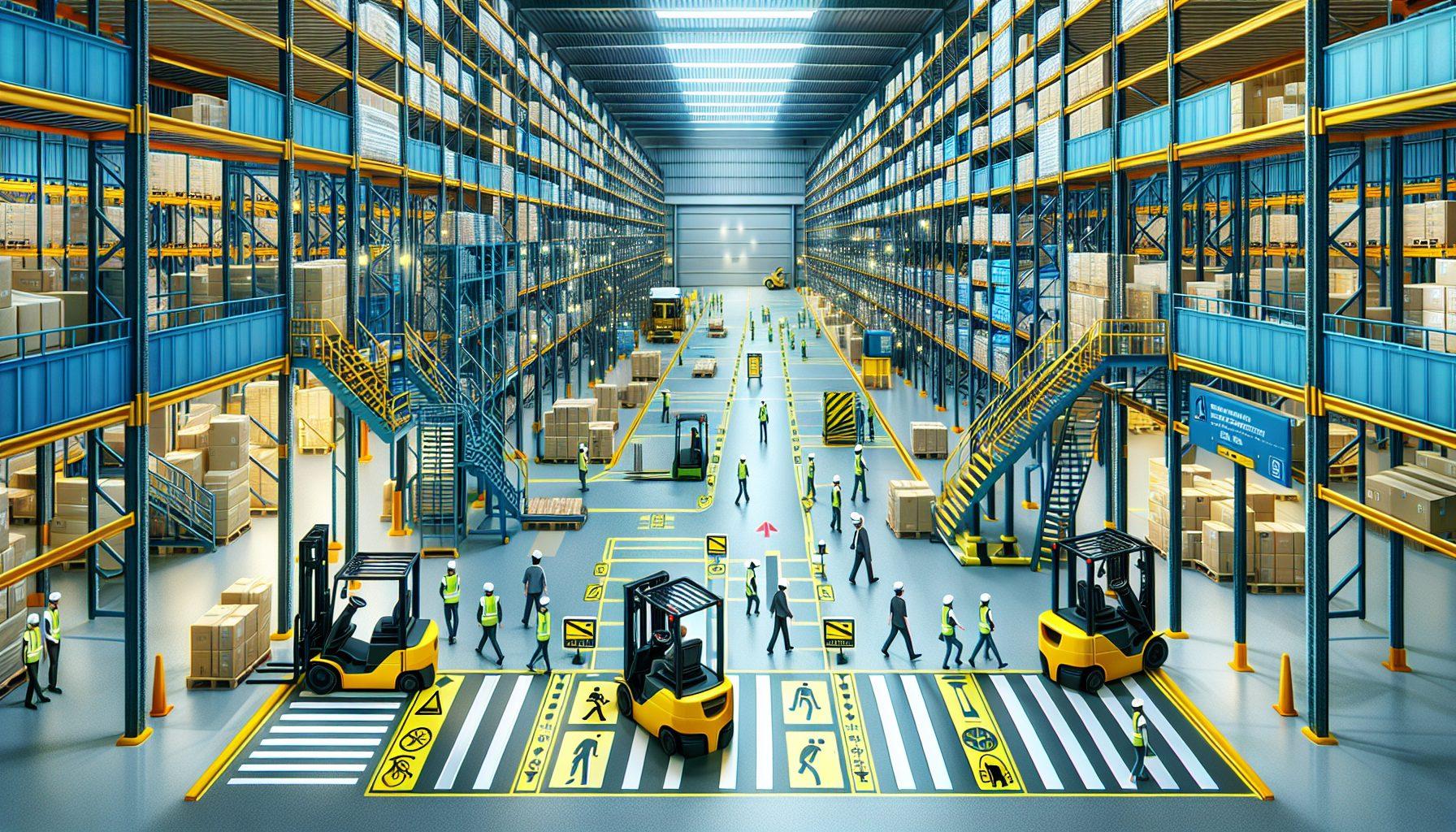Warehouse operations can be a bustling and busy environment. With forklifts zipping around, inventory being moved, and employees working diligently, it’s crucial to ensure the safety of everyone in the warehouse. One of the key aspects of maintaining a safe warehouse is designing and implementing safe pedestrian routes.
The Importance of Safe Pedestrian Routes
By creating designated paths and routes for pedestrians, you can minimize the risk of accidents and injuries in your warehouse. Safe pedestrian routes help to separate foot traffic from forklifts and other moving equipment, reducing the chances of collisions. They also provide clear guidelines for employees, visitors, and contractors to follow, ensuring a smooth and safe flow of people within the warehouse.
When designing safe pedestrian routes, it’s essential to consider the specific layout and operations of your warehouse. Here are some key factors to keep in mind:
- Layout and Space: Analyze the layout of your warehouse and identify areas where pedestrians frequently move. Consider the available space and any potential obstacles. Make sure the routes are wide enough to accommodate the expected foot traffic and allow for easy movement.
- Visibility: Ensure that pedestrian routes are well-lit, especially in areas with poor lighting. Good visibility is crucial for both pedestrians and forklift operators to see each other and avoid accidents.
- Signage and Markings: Use clear and visible signs and markings to indicate pedestrian-only routes, crossing points, and potential hazards. This will help everyone in the warehouse easily identify and follow the designated paths.
- Pedestrian Crossings: Identify areas where pedestrians need to cross paths with forklifts or other material handling equipment. Install clearly marked pedestrian crossings and consider implementing safety measures like speed limits or stop signs to enhance safety.
- Barriers and Guardrails: Use physical barriers, such as guardrails or safety cones, to separate pedestrian routes from areas where forklifts operate. This provides an added layer of protection and helps to prevent accidental entry into dangerous zones.
To further enhance safety in your warehouse, consider investing in advanced technologies such as a forklift pedestrian detection system. These systems use sensors and alarms to detect potential collisions between forklifts and pedestrians, giving both parties an early warning and preventing accidents.
Training and Education
Designing safe pedestrian routes is only one aspect of ensuring warehouse safety. It’s equally important to provide proper training and education to all employees regarding the importance of following these designated routes.
Implement comprehensive training programs that educate employees about the potential hazards of not adhering to the established pedestrian routes. Emphasize the need for awareness, alertness, and constant vigilance when moving around the warehouse. Encourage employees to report any safety concerns or suggest improvements to make the pedestrian routes even safer.
Regular refresher training sessions should also be conducted to reinforce the importance of safety. These sessions can include demonstrations, simulations, and discussions to address any specific issues or challenges faced by employees in their daily tasks.
The Continuous Improvement Mindset
Warehouse safety is an ongoing process that requires a continuous improvement mindset. Regularly evaluate and reassess your pedestrian routes to identify any potential improvements or areas that may need adjustment. Regularly communicate with your employees to gather their feedback and insights. They often have valuable input on how to enhance safety based on their day-to-day experiences within the warehouse.
In conclusion, designing safe pedestrian routes in your warehouse is paramount to ensuring the well-being of your employees and visitors. By carefully considering the layout, visibility, signage, and potential hazards, and by investing in advanced technologies like forklift pedestrian detection systems, you can create a safe and efficient working environment. Remember to provide thorough training and encourage a continuous improvement mindset to maintain a strong safety culture in your warehouse.

